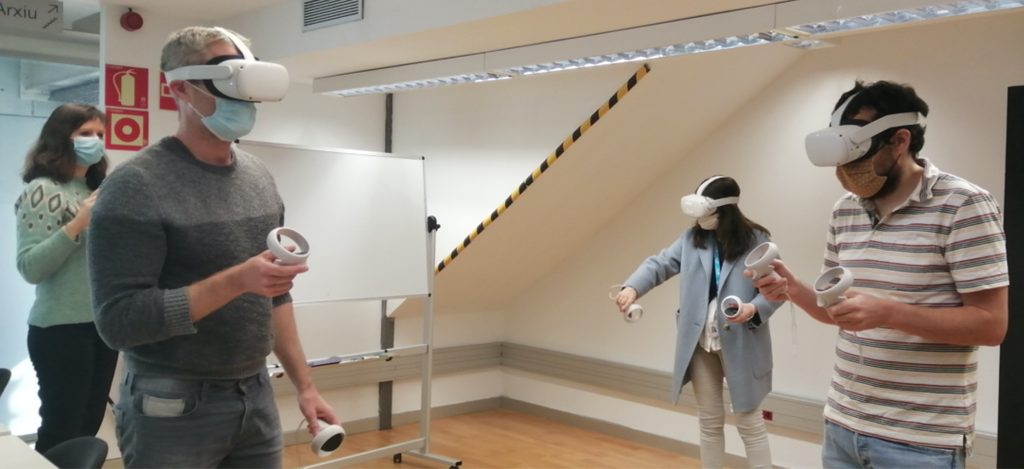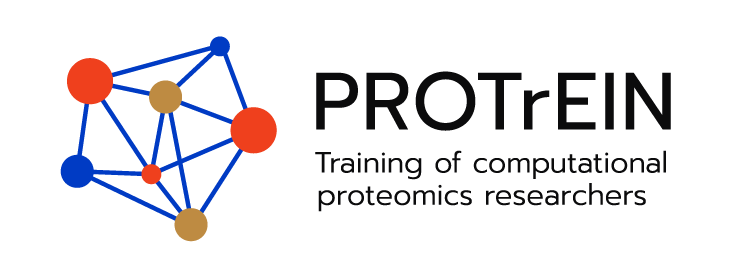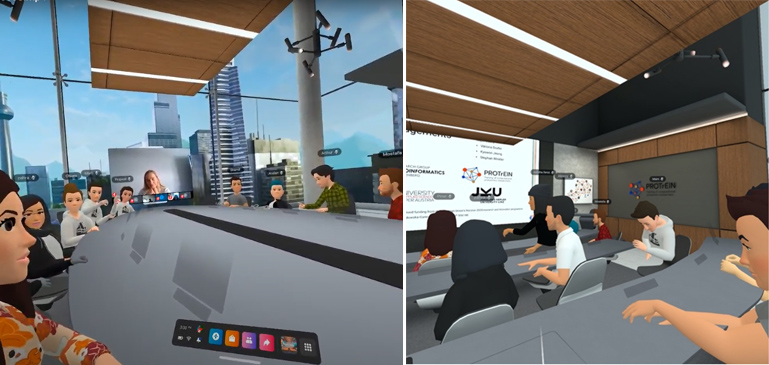Jonas Krebs Mar 15, 2022 · 5min read
Two years ago (almost to the day), when we had just entered the first hard Corona lockdown in Spain, I shared here my first thoughts about the feasibility of virtual reality (VR) in online meetings. I ended my article with the conclusion that there are amazing immersive tools out there beyond traditional video conferencing platforms – we just have to explore and actually start using them.
Today, I am thrilled to say: we did! And we did with such success that it is about time to give an update on the uncountable possibilities and application fields that we discover(ed) and start applying in our projects and training courses at the CRG. It was a long way to go and luckily my persistence and good sense for promising novel ideas helped to reach the point we are today.
After my post in 2020, I got so fascinated about VR that I bought my first own headset (which is of course already completely antique). I tried dozens of tools I only read about before, and cannot say it in other words: it was just a big “WOW”! I suppose everyone who enters VR for the first time can confirm that it is an incredible close and “real” experience, not comparable at all to anything that happens on a flat screen.

Luckily, many VR collaboration tools also allow to connect via the desktop, so that I could already enter the spaces and tools at the CRG in smaller groups (mainly with Damjana and Anna from our Training Unit). We got a good feeling for the possibilities and application potential in our projects and trainings so that we even included the VR topic in two online training courses to give others a first taste of the technology and some inspiration. But then, also due to a missing bigger framework to apply VR, our first fascination wave shrank.
Things changed, when we were informed that our MSCA-ITN proposal “PROTrEIN” received funding, a European Training Network to train the next generation of computational proteomics researchers. Among the consortium members, there is also a gamification group, located at Tampere University in Finland, with many links to VR.

When we realised that the Covid pandemic would accompany us as for much longer than initially anticipated, I quickly realised that THIS project was the unique opportunity for the missing VR framework. I am so grateful that I could convince the PROTrEIN coordinator and head of the CRG/UPF Proteomics Unit, Eduard Sabidó, and the head of the gamification group, Juho Hamari, to bring the idea forward and reach out to the whole consortium. All the tests we did previously, certainly helped to persuade the partners, and all agreed to purchase VR headsets for their PhD fellows and themselves. And here we are: Since early this year, we have our monthly meetings as avatars in a VR environment, almost mimicking the atmosphere of an in-person meeting.

But this is only the beginning. In parallel, the CRG Training Unit could convince the technology platforms´ leaders to do 3D scans of their laboratories. Thanks to this, you can now virtually enter each platform, either from the desktop or in VR using headsets, with a huge potential to organise remote lab visits or training courses in the future.

The ultimate goal will be the combination of both approaches, to meet as avatars not in an artificial, but in a 3D-scanned “real world” environment with possibilities of interacting with each other and of importing additional content. We are still not there yet, but we are running first tests and are on a good track.

What comes next? Also (or maybe even specially) in research, where many activities are based on physical mobility, VR has the power of revolutionizing the way we work and interact. Imagine a future, where independently of where you come from, what your travel availability is or your environmental concerns are, you can participate in training courses, meetings and conferences under conditions that imitate almost entirely in-person conditions and experiences. The pictures above give already a good impression how e.g., exhibitions and poster sessions could be organised in an immersive and engaging way.
There are of course also many dark scenarios discussed about VR and the “Metaverse” and when I see movies like “Ready Player One“, I wonder whether this will be the future. But I try to see things as so often from an optimistic angle and focus on the incredible application potential and sustainability aspects of this still novel technology!
Did you get curious about VR applications in life science research? Please get in touch with us, if you are interested in exchanging experiences. Damjana and I together with Zampeta from Tampere will also give a talk about “Next generation and VR assisted research, training and networking tools and their applications” at the 2022 Annual Conference of the Marie Curie Alumni Association on the 26th of March in Lisbon. It is still possible to register; the talk will be streamed.